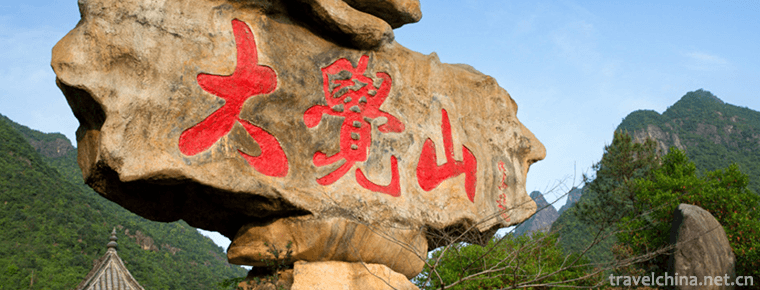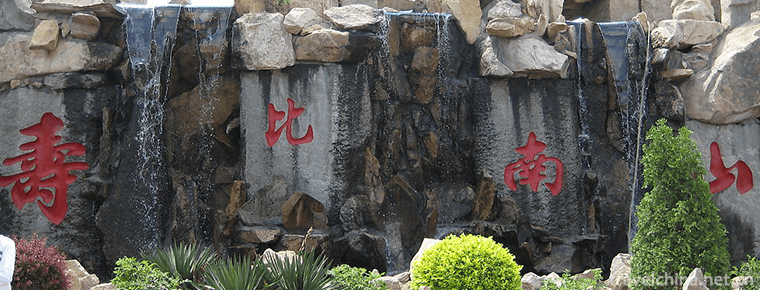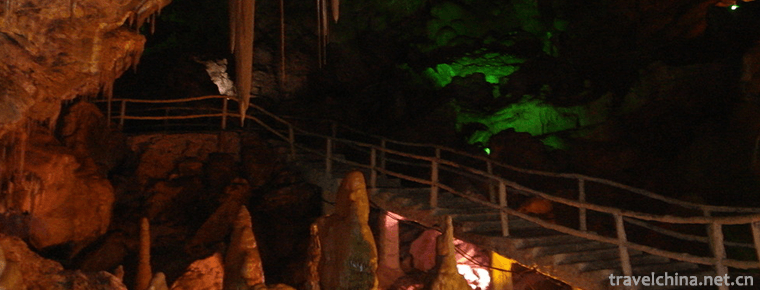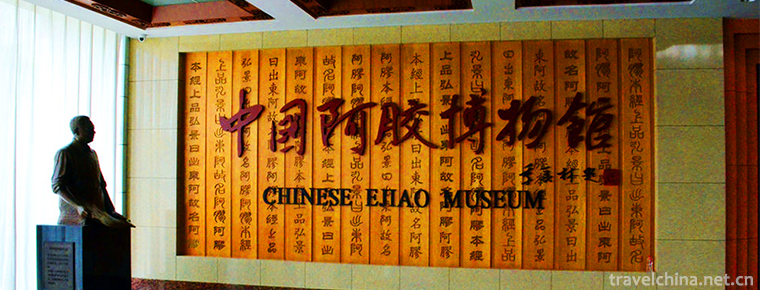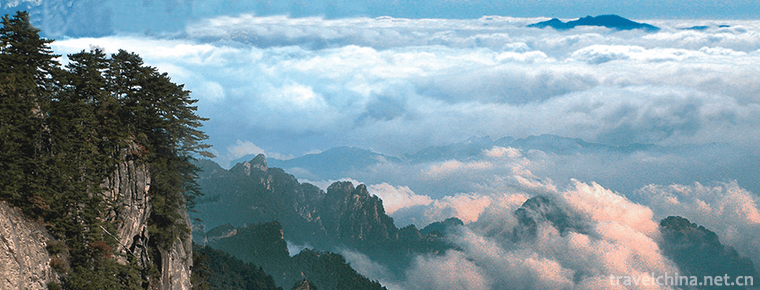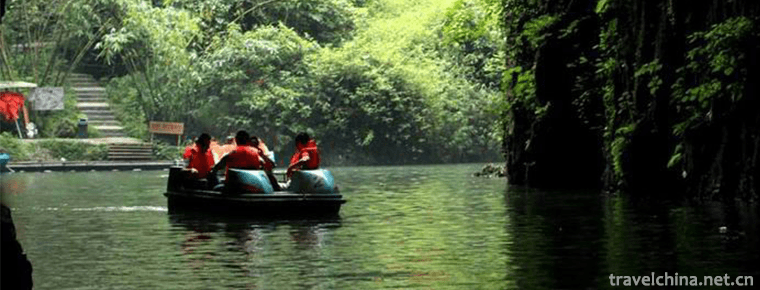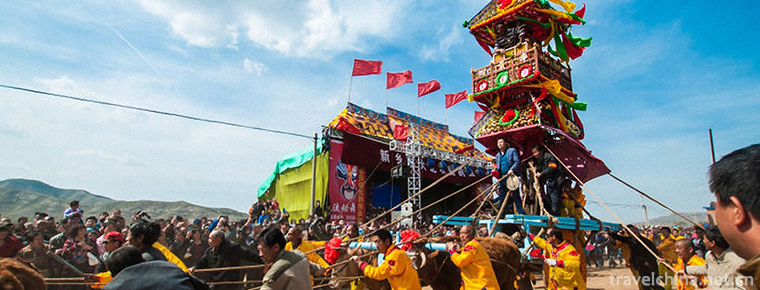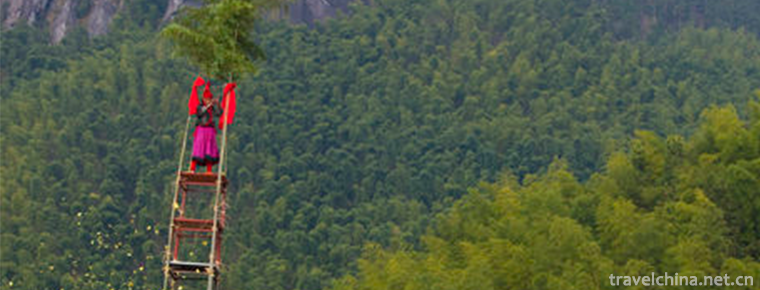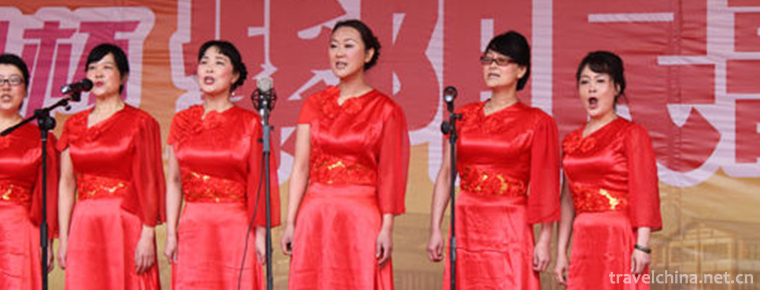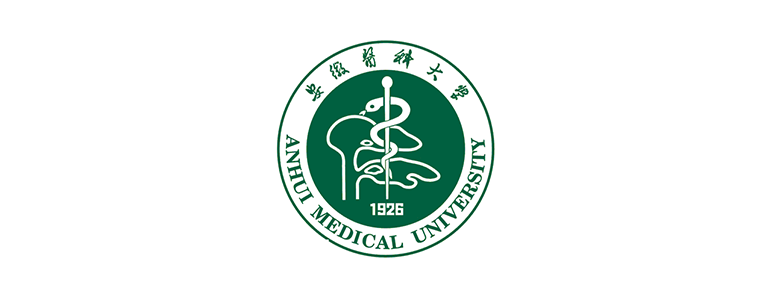Shanghai Zoo
Shanghai Zoo is located at 2381 Hongqiao Road, Changning District, Shanghai, which is close to Shanghai Hongqiao International Airport. Founded in 1954, originally known as the West Suburb Park. Shanghai Zoo is a large national zoo, covering an area of 743,000 square meters. It raises more than 400 kinds of animals on display. The area of the museum for raising and exhibiting animals is 47237 square meters. It is one of the top ten zoos in China and the second largest zoo in China.
Shanghai Zoo now covers an area of 74 hectares, with more than 6000 rare and precious wildlife on display. Among them are the world-famous giant pandas known as "national treasures" and "living fossils", as well as rare wild animals such as golden monkeys, South China tigers, Chinese alligators and other special products of our country, as well as representative animals around the world such as gorillas, African lions, giraffes, kangaroos, South American tapirs and so on. Nearly 600 kinds of trees and more than 100,000 trees were planted in the garden, especially 100,000 square meters of fresh and open lawn, which basically maintained the golf course topography 50 years ago. Every green landscaping in the garden is combined with the ecological environment of animals. Especially in Swan Lake, reed bushes and shady trees inside and outside the lake area, pelicans and geese often line up and circle in the blue sky, with graceful and vigorous posture. In recent years, with the goal of building a city ecological zoo, Shanghai Zoo has gradually transformed and built a visual barrier-free ecological animal exhibition area, making tourists feel as if they are in nature and enjoy the beauty of wild fun.
Since the opening of the park, Shanghai Zoo has received nearly 160 million visitors from the initial simple tourist sites to the comprehensive parks with four functions of entertainment and leisure, animal knowledge popularization, scientific and technological research and wildlife protection. Beautiful landscape, wonderful wildlife world, ecological wildlife exhibition area, harmonious coexistence of human and animals, Shanghai Zoo will leave visitors a good memory and love for nature.
Historical evolution
The site of Shanghai Zoo was originally a golf course. According to the memories of several old workers in the farm, about 26 years (1900) in Guangxu of Qing Dynasty, British expatriates opened Lao Yutai Horse House here, covering more than 20 mu (1.33 hectares). During Xuantong period (1909-1911), it expanded to about 100 mu (6.67 hectares). In 1914, eight British businessmen, including Archean Ocean Bank, Yihe Ocean Bank and HSBC Bank, purchased the land in the Republic of China. In the Republic of China, a golf course club (also known as Hongqiao Fengqiu Club Course) was established in 5 years. Land use expanded to about 150 mu (10 hectares) and increased to 417 mu (27.8 hectares) in the 19 years of the Republic of China (1930).
In June 1954, the General Office of the State Council announced to the Shanghai Municipal People's Government that an elephant presented to Chairman Mao Zedong by the Dai people of Xishuangbanna, Yunnan, would be raised and exhibited in Shanghai. So the idea of building the West Suburb Park into a zoo was put on the agenda. In July, the Municipal Bureau of Public Works dispatched a group of engineers and technicians headed by Cheng Xuke, deputy director of the Zoo Management Department, to Beijing Zoo to study, and invited Sasnovsky, director of Moscow Zoo in Beijing, to discuss the park planning and related matters. In August, Sasnovsky and Liandanova, director of veterinary medicine of Moscow Zoo, came to Shanghai to assist in exploring the West Suburb Park, Longhua Nursery and Huajing Changqiao Town, and finally decided to expand the West Suburb Park into a zoo. The planned zoo integrates exhibition, production, scientific research and popular science with a total area of 2,000 mu (133.33 hectares). Zoo construction adopts the principle of overall planning and phased construction. Before the zoo is completed, the original cultural rest park will be reserved, but no new facilities for mass cultural activities will be built.
On March 20, 1953, the Ministry of Foreign Affairs approved the report of the Foreign Affairs Office of the Shanghai Municipal People's Government on the recovery of golf courses in Xinjing District. On June 12 of the same year, the Municipal Foreign Affairs Office held discussions with the Municipal Bureau of Works, the Municipal Real Estate Administration, the Municipal Labor Bureau and the Xinjing District Office of the Municipal Federation of Trade Unions on the recovery of Hongqiao Golf Course. In July of the same year, the Park Administration Department of the Municipal Bureau of Works, while recovering the golf course land according to law, purchased the building and other facilities of the golf course for 17,000 yuan. In October of the same year, the Municipal Construction Committee decided to build a cultural rest Park here. In October 1953, Xu Jingyou, the gardening Department of the Garden Management Department, was responsible for the overall planning. By May of the following year, the Department had completed greening planting, roads, sewers, lighting and other supporting projects. The bamboo structure gates, Wuqu corridor, octagonal corridor, double-eaves air tower, hexagonal pavilion, Small Square Pavilion and other buildings had been built, as well as skating rinks and children's gardens parks. The investment amount is 853,300 yuan. On May 25, 1954, the park with an area of 421 mu (28.07 hectares) was opened to the outside world and named as the West Suburb Park. During the first ten days of opening, the number of visitors reached as high as 3-150,000 per day, traffic jams outside the park and damages of flowers and trees inside the park. On June 5, the opening of the park was suspended urgently. During this period, the Municipal Works Bureau, together with the relevant departments, took some corresponding measures: to build a 12-meter wide garden gate and an 8-meter wide wooden bridge in the southeast of the park; to build a 21-acre (1.4 hectare) non-motorized car parking lot outside the park; to make appropriate improvements in ticketing methods, traffic management, catering supply and facilities inside the park. The Park reopened on June 21.
In December 1954, after the criticism of "anti-waste", the planned area of the park was reduced. Finally, it was decided to requisition 373 mu (50.27 hectares) of the northern part of the West Suburb Park on the basis of the original 421 mu of land. Wu Zhenqian, the gardening department, was in charge of the overall planning. Yu Songhua, Gu Zheng, Xu Jingwei, Hong Weilie, Yan Deqing, the main personnel involved in the design, and the construction of East China.
On March 20, 1953, the Ministry of Foreign Affairs approved the report of the Foreign Affairs Office of the Shanghai Municipal People's Government on the recovery of golf courses in Xinjing District. On June 12 of the same year, the Municipal Foreign Affairs Office held discussions with the Municipal Bureau of Works, the Municipal Real Estate Administration, the Municipal Labor Bureau and the Xinjing District Office of the Municipal Federation of Trade Unions on the recovery of Hongqiao Golf Course. In July of the same year, the Park Administration Department of the Municipal Bureau of Works, while recovering the golf course land according to law, purchased the building and other facilities of the golf course for 17,000 yuan. In October of the same year, the Municipal Construction Committee decided to build a cultural rest Park here. In October 1953, Xu Jingyou, the gardening Department of the Garden Management Department, was responsible for the overall planning. By May of the following year, the Department had completed greening planting, roads, sewers, lighting and other supporting projects. The bamboo structure gates, Wuqu corridor, octagonal corridor, double-eaves air tower, hexagonal pavilion, Small Square Pavilion and other buildings had been built, as well as skating rinks and children's gardens parks. The investment amount is 853,300 yuan. On May 25, 1954, the park with an area of 421 mu (28.07 hectares) was opened to the outside world and named as the West Suburb Park. During the first ten days of opening, the number of visitors reached as high as 3-150,000 per day, traffic jams outside the park and damages of flowers and trees inside the park. On June 5, the opening of the park was suspended urgently. During this period, the Municipal Works Bureau, together with the relevant departments, took some corresponding measures: to build a 12-meter wide garden gate and an 8-meter wide wooden bridge in the southeast of the park; to build a 21-acre (1.4 hectare) non-motorized car parking lot outside the park; to make appropriate improvements in ticketing methods, traffic management, catering supply and facilities inside the park. The Park reopened on June 21.
In December 1954, after the criticism of "anti-waste", the planned area of the park was reduced. Finally, it was decided to requisition 373 mu (50.27 hectares) of land in the northern part of the West Suburb Park on the basis of 421 mu of land. Wu Zhenqian, the gardening department, was responsible for the overall planning. Yu Songhua, Guzheng, Xu Jingyu, Hong Weilie, Yan Deqing, the main personnel involved in the design, as well as the East China Architectural Design Institute and the East China Architectural Design Institute were responsible for the overall planning. Engineering technicians of Shanghai Civil Architectural Design Institute. Construction began immediately. The building area of animal cage is 1857 square meters. Except elephant house is reinforced concrete building, the rest are simple facilities. In the summer of 1955, the Municipal Park Administration transferred some of the animals from Zhongshan Park Zoo and Renaissance Park Zoo to the West Suburb Park for exhibition.
While building the zoo, the Park Management Office of the Municipal Bureau of Works sent Chen Keli, deputy director of Xijiao Park, to lead six technicians and breeders to Xishuangbanna, Yunnan Province, to pick up elephants. At that time, there were no railways or roads in the southwest. The transporters overcame various difficulties in life, language and transportation. It took more than seven months. On June 12, 1955, the elephants arrived in Shanghai safely. During this period, more than 20 species of animals such as monkeys, tigers, bears, golden cats, red deer, red wolves and baby fish were collected and transported back to Shanghai with elephants in Yunnan and Guizhou. On July 9, the elephant named Nanjiao was officially displayed. This year, there were 31 species and 46 animals on display in the West Suburb Park, covering an area of about 40,000 square meters.
At the turn of spring and summer in 1955, Beijing newspapers and magazines, focusing on Sanlihe office building and Friendship Hotel, criticized the "retro doctrine" of architectural design and set off a trend of anti-waste. Shanghai newspapers and magazines also focus on the elephant houses in the Western suburban parks, criticizing the design idea of "pursuing form, regardless of practicality, extravagance and waste". To this end, the zoo's construction plan was re-examined. The area of the zoo was reduced to 279 mu (186,000 square meters), including 645 mu (430,000 square meters) of the park.
In late spring and early summer of 1956, the Chinese Academy of Sciences suggested that besides the existing zoos in Beijing, 10 big cities such as Shanghai should also build zoos. This proposal was supported by some leaders of the state, provinces and municipalities, so the planned area of Shanghai Zoo was changed to 990 mu (66 hectares). The original cultural rest Park was no longer reserved. The whole park was redesigned as a complete zoo, and the cages were set up according to the evolutionary law of animals, from low to high, and in accordance with the visiting route. From 1956 to 1957, most of the simple cages were demolished and new swimming pools, wading pools, songbirds cages, Raptors cages, canine cages, small omnivorous animal cages, lion and tiger houses, Xiongshan and monkey hills were built. In March 1959, 319 mu (21.27 hectares) of land was requisitioned and the park area expanded to 1055.7 mu (70.38 hectares). Swan Lake, Lion Tiger Mountain, Panda Ridge, Bison Mountain, Deer Garden and Baihua Hall were built in the park in 1997, which initially formed the appearance of a large comprehensive zoo.
After 1960, giraffe houses, sea lion ponds, pheasant and chicken gardens and small animal cages were built one after another. After 1970, zebra house, goldfish gallery, songbird house, Penguin house, ostrich house, orangutan house, Hippo house and kangaroo house were built. In 1978, an animal breeding ground covering 37,000 square meters was opened in Xinjing, Hami Road. Since 1980, rhinoceros barns, small zoos and giraffe houses have been built. By 1989, the building area of animal cages had reached more than 14,000 square meters. Since most of the cages built in the early period were old and damaged, the large-scale reconstruction was approved by the Municipal Construction Committee. Local renovation projects are planned and designed by Liang Yousong of Shanghai Landscape Design Institute. Zhang Ming, Zhang Yiwei and Hu Hong of Shanghai Civil Architecture Design Institute, Zhang Yiwei of Shanghai Landscape Design Institute, etc. Shanghai Landscape Engineering Company is responsible for the construction. By 1994, a priest hall, two halls, three halls, Rhesus Monkey Hill, marine animal area, amphibian and reptile hall, Shihu Mountain, medium-sized beast cage, etc. The gorilla hall, herbivorous area, entry bird garden, tropical bird hall, snack bar and photography department and other living service facilities have a total floor area of 12.8 million square meters and an investment of 39.42 million yuan.
Event age
In 1900, within the scope of the current zoo, a British expatriate in Shanghai opened the Yutai Horse House, covering an area of 1.3 hectares (more than 20 mu).
In 1914, eight British businessmen, such as Taigu Ocean Bank and HSBC Bank, purchased Yutai Horse House, which was transformed into a "golf course club" in 1916.
On March 20, 1953, the Ministry of Foreign Affairs approved the report of the Foreign Affairs Office of the Shanghai Municipal People's Government on the recovery of golf courses. In September, the Shanghai Municipal Government decided to build a cultural park on the basis of the original stadium.
On May 25, 1954, in commemoration of the fifth anniversary of Shanghai's liberation, it was named "Xijiao Park", which was officially opened to the outside world as a cultural and leisure park. At that time, it invested 853,300 yuan to build a series of garden facilities such as bamboo gate, skating rink and children's park. The opening of the West Suburb Park has caused a sensation in Shanghai. Opening only 10 days, the number of daily visitors is as high as 3 - 150,000 people, the loss of flowers and trees in the garden is large, the traffic jam outside the park. With the consent of the municipal government, the park was closed for 15 days and renovated. After renovation and opening of the park, the number of visitors will be controlled by 40,000 tickets per day. On June 20, the General Office of the State Council announced to the Shanghai Municipal Government that an elephant dedicated to Chairman Mao by the Dai people of Xishuangbanna, Yunnan Province, was given to Shanghai for raising and exhibiting. In August, the Shanghai Municipal Government decided to expand the West Suburb Park into a zoo. In December, seven technicians and breeders went to Xishuangbanna, Yunnan Province to transport the elephant Nanjiao back to Shanghai in June 1955.
In May 1955, a group of the earliest animal cages, such as the Elephant Palace, were built, covering an area of 1857 square meters. On July 9, the animal exhibition area was officially opened to the public. Elephants, tigers, bears, monkeys, deer and other animals are exhibited in this exhibition, covering an area of 4 hectares. The total area of the park is 43 hectares (645 mu) with 5 tickets per person.
Simple cages were demolished from 1956 to 1958. New lion and tiger houses, canine cages, bear hills, monkey hills, songbirds and Raptor cages have been built. Animal exhibition areas have been extended to the whole park.
In 1959, to celebrate the 10th anniversary of the founding of the People's Republic and the 5th anniversary of the founding of the park, Swan Lake was excavated, Lion Tiger Mountain, Panda Ridge, Luyuan and Baihua Hall were built. The park area expanded to 70 hectares (1055 mu), initially forming the appearance of a large comprehensive zoo. Siberian tiger reproduced for the first time.
From 1960 to 1963, the country suffered three years of hardship and material shortage. In order to ensure the supply of animal feed, the staff of the park actively implement the "poor, diligent and skillful" three-character policy, make use of all available resources in the community and the park, and ensure the normal growth of 193 species of 1807 animals.
In May 1964, Fuxing Park and Zhongshan Park were incorporated into the West Suburb Park. The animal hospital was formally established. South China tiger, golden monkey and black langur have successfully reproduced.
Giant pandas first breed in 1965.
From 1966 to 1970, scientists and breeders were organized to go to Yunnan and Sichuan for field investigation and species collection.
In October 1971, a young (7-year-old) wild female elephant "Banna" was obtained from Xishuangbanna, Yunnan Province.
From 1972 to 1976, the park gates were rebuilt. New giraffe house, zebra house, kangaroo house, songbird house and gorilla house were built, and independent animal breeding grounds were built.
From July to August 1974, they exchanged one pair of gray cranes and one pair of Tibetan chiefs for one pair of Japanese flower deer and one pair of penguins with Yokohama Zoo. This is the first international animal exchange in Shanghai Zoo.
In 1977, clouded leopard, California sea lion, white-lipped deer and other animals breed.
Asian elephants and kangaroos first reproduced successfully in 1978.
On January 1, 1980, Shanghai West Suburb Park was officially renamed as Shanghai Zoo. There are 308 species (including subspecies) and 4005 animals on display. In November, chimpanzees reproduced successfully for the first time.
In January and November 1982, two batches of breeding technicians went to Tibet for field investigation. Collected takin, red antelope, red-bellied pheasant and other animals. On July 15, Yangzi Crocodile Reproduction Research won the third prize for major scientific and technological achievements in Shanghai. On August 23, the giant panda Baimei gave birth to one baby. The giant panda has successfully reproduced for the first time.
On May 24, 1984, a large-scale Symposium and Exhibition on garden history were held to commemorate the thirtieth anniversary of the park. In May, the Oriental Stork was successfully bred for the first time in the world.
In 1985, South American tapirs, red-spotted antelopes and white ibises were successfully bred for the first time in China.
In 1986, the Royal Deer Court of England presented two elk (four unlike) to my garden, and the second prize of Shanghai Science and Technology Progress was awarded for "Investigation and Control of Parasitic Species of Rare Wildlife".
On June 4, 1987, 25 kinds of animals went to China Welfare Association to exhibit for disabled children.
In October 1988, South American bison was successfully bred for the first time.
In November 1989, the Computer Information Appraisal Committee of Animal Archives.
In April 1990, the leaders of the municipal government, the Municipal Construction Committee and the bureau came to the park to study the "three-year development plan for Shanghai Zoo". In May, squirrel monkeys first reproduced successfully.
In September 1991, the "Shanghai Zoo Renovation Plan Task Paper" was adopted.
In April 1992, a new zoo was built, and in June, the second primate museum was completed and opened. In July, Shanghai Zoo launched its first social wildlife adoption campaign and launched a series of activities called "Friends of Zoos".
On April 25, 1993, the first Friends of the Zoo Association was held, with more than 40 media and related units participating. From September 30 to October 2, the first Wildlife Conservation Friendship and Tiger Xiao Mid-Autumn Festival and National Day Night Park Fair were held. In December, gorillas presented by the Rotterdam Zoo were exhibited in Shanghai.
In March 1994, the "Shanghai Zoo Renovation Plan" with a total expenditure of 30 million yuan was basically completed. Primate hall, gorilla hall, amphibian and reptile hall, science and Education Hall were opened to the outside world. On April 12, Mr. George Bopset of Montreal, Canada, presented 1000 butterfly specimens to our garden. On April 18, in order to celebrate the 20th anniversary of the establishment of a friendly city between Shanghai and Osaka, Huangju, the former mayor of Shanghai, and Xiwei, the mayor of Osaka, were also unveiled in our garden. On May 25, the 40th Anniversary Celebration Conference of Shanghai Zoo was held.
On February 28, 1995, Shanghai and Chongqing Zoo cooperated to breed the first offspring of giant pandas belonging to Shanghai to arrive in Shanghai. On May 6, Erna gave birth to a baby mother elephant, the first Asian elephant of the second generation in the Chinese zoo. Shanghai Zoo has won the honor of "Top Ten Zoos in China" and the title of Shanghai Labor Model Collection has been awarded to the Feeding Department. On September 22, Xu Kuangdi, former mayor of Shanghai, inscribed the name of Shanghai Zoo. In October, a pair of golden monkeys went to Yokohama Zoo in Japan for a 10-year loan exhibition and cooperative research. Shanghai Zoo has become a member of the European Endangered Species Conservation Program (EEP).
In December 1996, 11 tigers became ill within a week. The diagnosis was canine distemper (the first time in China), which was rescued by all parties and recovered after two weeks.
On April 1, 1997, in May, the new door of "Jixiang Yingbin" was completed. The first Animal Art Festival of Shanghai Zoo was opened. In June, spotted-billed ring penguins first reproduced successfully.
From April to June 1998, Koala, a koala, was first exhibited in Shanghai, Yokohama City, Japan.
In April 1999, the butterfly garden was built and live insects were officially raised and exhibited. In June, 95% of the area of the zoo was flooded and closed for three days due to the unprecedented rainstorm in one hundred years, which attracted the attention of the media at home and abroad. The whole staff of the zoo did not cause great losses in flood control, flood drainage and animal rescue. In October, a pair of Brazilian wolves sent by Brazilian CBMM Company to Mayor Xu Kuangdi settled in Shanghai Zoo. This is the first time that Brazilian wolves have been raised and exhibited in China. In December, the Shanghai Zoo was approved by the National Science Education Commission as the "National Science Education Popularization Base", the first national science education base zoo in China.
In May 2000, the leopard first reproduced successfully (three offspring per litter). In October, the "31.1 million yuan" project to rebuild rainwater and sewage in the park was launched. In November, Dr. Jane Goodall visited the garden. Animal Hospital was rated as a model group in Shanghai
。
In March 2001, Japan's Sanhe Institute of Chemistry presented 20 chimpanzees to the park. In April, the renovation plan of the natural ecological park and the barrier-free display of animal sight was launched in an all-round way. In December, the management of Park archives passed the second-level national acceptance.
In May 2002, the "2002 Shanghai Science Popular Education Exhibition" was held in the park. In October, it was established as a national 4A-level scenic spot.
On April 7, 2003, the giant panda Lele (male) and the Beijing Zoo Yaya (female) went to Memphis Zoo for a 10-year cooperative study. From April to June, the whole country suffered from SARS, and the number of tourists dropped to the lowest level in history. Animal epidemic prevention and economic readjustment are actively carried out throughout the park. From July to December, the "separation of management and maintenance" and the reform of system transformation were implemented.
In February 2004, there were many outbreaks of "avian influenza" in China, which were seriously dealt with in the park to ensure the safety of birds. From February to October, a series of activities were held to celebrate the 50th anniversary of the park. More than 7000 animals of 620 species were exhibited.
On February 17, 2008, Dandan, a gorilla, was born.
On November 2, 2009, "The Seychelles Government Donated the Adabra Elephant Turtle Ceremony to the Shanghai World Expo" was held at the Amphibious and Reptile Museum of Shanghai Zoo.
On January 8, 2010, 10 lovely baby giant pandas from Ya'an, Sichuan, arrived at Shanghai Zoo.
On the morning of May 17, 2012, the gorilla Astra gave birth twice.
On November 14, 2012, the two-toed sloth introduced by Guyana was officially exhibited.
In the middle of the night of December 6, 2012, Shanshan, a giraffe, successfully gave birth to a male Cub with a height of 165 cm.
Main attractions
Science and Education Museum
The first room of the Nature Conservation Exhibition uses models to show the situation of soil erosion, desertification of farmland and grassland, floods, droughts and sandstorms caused by the destruction of vegetation on the ground. The second room of Nature Conservation Exhibition shows the relationship between man and nature, the cause of extinction of animals and the speed of extinction in pictures and words. Outside the museum, there are ribbon flower beds along the wall, with red maple, crabapple and yellow poplar planted on them. Guannan is a large lawn, surrounded by planting tall Platanus orientalis, Magnolia grandiflora, Chinese tallow, Chinese wolfberry, stone tables and benches under the shade of trees. On the right lawn There is a solar clock on a stainless steel rack.
On the front of the museum is a map of the world fauna animals, which is 1 meter high, 2 meters wide and assembled with 504 tiles. The map shows the location of 61 species representing 7 fauna. In the circular patio in the middle of the museum, an animal evolutionary model is erected to show the whole process of evolution from the primitive anaerobic heterotrophs to humans. The Museum has three unique exhibition rooms. There are more than 1000 specimens in the Butterfly Museum, including five species of butterflies and 400 other precious butterflies which are protected by the state.
Nine bend promenade
Located to the west of the Science and Education Museum, the bamboo-structured Wuqu Corridor was built in 1954 and rebuilt into a reinforced concrete nine-curve corridor in 1972. Corridor flat top, the North corridor wall with leaky windows, the South Corridor column, a total length of more than 70 meters, building area of 320 square meters. In front of the corridor, a slightly undulating lawn of the original golf course was reserved. In 1966, a concrete statue of "Lady Heroes and Girls of the Grassland" was built on the lawn. Its base is 1.1 meters high, like 3.5 meters high, covering an area of more than 20 square meters. There are tall shady cedar, longbai, acer, camphor, medlar and other trees and flower shrubs planted in the lawn, under which stone tables, stone benches or wooden chairs are set. Behind the corridor are scattered stones, meandering streams, beside the flowers and shrubs of Lamei, Osmanthus fragrans, pomegranate, Nantianzhu, Lagerstroemia, plum and golden strip.
Festival-tailed Lemur Garden
Located in the north of Monkey Mountain, it is connected with Monkey Mountain by simulation. Grass and shrubs are planted in the garden for the festival-tailed lemurs to play with. Visitors can either stand in an aerial corridor of the Festival-tailed Lemur Park to watch animals fight, or they can see the activities of the lemurs through toughened glass about one meter high by the main road of the zoo.
Beast Ecology Park
An open lion-tiger-leopard ecological exhibition area was built before New Year's Day 2001. Based on the demolition of part of the old leopard houses, the Predator Eco-Park is rebuilt with an area of 700 feet. According to the ecological relationship between human, animal and nature, the whole garden is divided into three different small ecological gardens according to the species and living habits of the animals on display, and the Bengal tiger, Jaguar and leopard are reared and exhibited separately.
Designers build terrain in the ecological park by piling up soil and choosing some supporting environments such as camphor and Acer trees with DBH of 0.4-0.5 meters. According to the habits of different animals, small trees and flowers and shrubs are allocated and planted in natural groups. The dead trees are arranged on the grassland to meet the requirements of predation and grinding claws of beasts, and the damage of beasts to big trees can be avoided. In addition, a large number of vines such as mountain tiger, passionflower, Southern snake vine, chicken blood vine, wisteria and other greening plants are also used. A large area of toughened glass was installed on the periphery of the ecological park. Visitors had no visual obstacles during the visit, which improved the viewing effect and made them feel close to animals.
Squirrel Monkey Ecological Park
Squirrel monkey ecological park is an ecological exhibition area with visual barriers, which was completed on National Day 2000. The Park covers a total area of 1000 square meters, including 700 square meters of outdoor activities. In the garden, Albizia julibrissin, a deciduous tree, was used as the skeleton tree species, which accorded with the habits of squirrel monkeys living in tropical virgin forests. Two evergreen species, coral and privet, as well as Rosa roxburghii and Pyracantha roxburghii, were selected as background trees to provide edible fruit for squirrel monkeys. In the design of the squirrel monkey ecological park, the word "ecology" has always been followed, which organically combines human, animal and nature to create an ecological environment in which human and animal coexist harmoniously in nature.
Amphibian Zoo
The indoor area is 3180 square meters, part of which is a two-storey building. The outdoor area is 200 square meters. It was built and opened in 1994. The museum is mainly composed of seven parts: Preface Hall, Aquarium Hall, Amphibian Hall, Lizard Hall, Non-toxic Snake Hall, Viper Hall and Ecology Hall. The Aquarium exhibits marine coral fishes, tropical ornamental fishes and freshwater economic fishes, including Chinese protected fish, Chinese sturgeon, carmine, and large marine reptiles such as turtles, tortoises and sea turtles.
The amphibious hall includes giant salamanders (doll fish), tree frogs, and slipper toads, which were used in ancient times to check whether a woman was pregnant or not. The 6-meter Python and the five-clawed Golden Dragon in the lizard hall are rare and endangered wildlife such as giant lizards and tortoises. The snake hall also has netted pythons, various poisonous and non-poisonous snakes.
The Department of Ecology simulates the subtropical animal ecological environment and planted dozens of tropical plants. Visitors can overlook Chinese alligators, Gulf crocodiles over 3 meters long, Malaysian giant turtles over 10 kilograms and China's largest, 140 kilograms of catfish.
Located on the west side of the gate. Originally a brick and wood structure, Baihua Hall was changed into a three-storey ring building with reinforced concrete structure in September 1992, covering an area of 2200 square meters. The museum was designed by Shanghai Civil Design Institute and constructed by Shanghai Landscape Engineering Company. Mosaic walls are white and green, and there is a green tree pattern on the south wall to show the theme of ecological protection. On the front wall, there are five golden characters inscribed by Tan Jiazhen, "Science Education Museum".
Chimpanzee Ecological Park
The orangutan pavilion was built in 1977, with a total floor area of 850 square meters. There are six indoor exhibition halls which are combined into two connected buildings. They mainly raise apes such as orangutans, chimpanzees and gibbons.
The ape-like exhibition hall is spacious. Each indoor exhibition hall has 43 square meters. There are long windows lighting in the South and East directions. It is well ventilated. The indoor exhibition hall is partially three floors. There are four indoor exhibition halls and two open outdoor stadiums. The outdoor playground is a circular peninsula, surrounded by water on three sides. Visitors observe the daily activities of animals on the raised ground. Every sunny day, chimpanzees go to the outdoor playground to play and play. Chimpanzees are the most intelligent animals on earth except human beings. The zoo provides some toys for chimpanzees. Besides enriching their daily activities, it also adds to the pleasure of tourists. In 1991, a gorilla pavilion was built with a total floor area of 515 square meters. There were two indoor exhibition halls and two outdoor activities venues.
Asian Elephant Ecological Park
Shanghai Zoo has a rare family of three generations of Asian elephants living together in domestic zoos. Elephant exhibition area includes elephant palace and elephant outdoor playground. Established in 1955, the elephant palace is the first permanent zoo building in Shanghai Zoo, with a total floor area of 1550 square meters. It mainly consists of 500 square meters indoor playground, 620 square meters visiting hall and four halls of more than 100 square meters. The east, West and south sides of the indoor playground are 9 meters wide. The entrance hall of the entrance and exit hall has one in the East and one in the west. There are two halls in the south. The two halls in the south are connected by a Wisteria scaffold. The whole building's doors and windows are carved with Chinese fir into a national style graphic decoration.
The elephant outdoor playground is located in the northeast of the elephant building, covering an area of 4,000 square meters. It has a 240 square meters bathing pool and a large shade shelf. It is surrounded by dry ditches and is isolated from tourists. Activity ground is mainly slightly undulating mud, and planted with trees, more suitable for activities such as mud bath, sports and so on. Asian elephants in Shanghai Zoo have always been one of the children's favorite animals.
Giraffe Pavilion
The Giraffe Museum of Shanghai Zoo was built in 1965. Its total building area is 712 square meters. It is divided into two separate cages, East and west. Each cage has a separate compartment for the baby's birth. Because giraffes are tall and legs are long, in order to meet their basic needs of activities, outdoor activities area reaches 2180 square meters. Grassland and trees are planted in the fields. Because the height of the fence is 1.20 meters, visitors can directly observe the giraffe's every move without blocking their sight.
Herbivorous Zoo
Also known as the ecological sheep park, located in the east of the Giraffe Hall, covers an area of more than 6000 square meters, which was completed in March 2003. The Park simulates the original environment of tropical herbivores and displays the animals in a visually accessible way. After visiting the tall giraffes, tourists walk up the winding stone-like path to the overhead wooden trestle road. Looking from the fence, antelopes gallop on the rolling grass, alpacas walk by the dry pool, and zebras hide in the bushes. Tourists seem to be in the animal world of Africa, in close contact with animals.
Herbivorous Zone
Built in 1959, on both sides of the main road in front of the Beast Pool, Luyuan on the west side of the main road was rebuilt and expanded into Luke Exhibition Zone and Bovine Exhibition Zone in 1993.
Deer Family Exhibition Area is divided into two sub-districts, Daluke Family and Xiaoluke Family. The cage house in Daluke Section adopts the form of foreground combined with backstage. The foreground exhibition area is divided into seven exhibition areas. Each exhibition area covers an area of 400-700 square meters. Trees, rocks, running water, shade shed and food trough are arranged in the area. There are 300-500 square meters of green isolation belt in the two exhibition areas. There are two animal houses in the back of each exhibition area as backyard. The front desk controls the number and species of exhibitions. Most of them are kept in the backyard. They are displayed on the front desk in turn to avoid environmental damage caused by too many exhibitions. The exhibition area is separated from visitors by dry ditches and low walls. Four cages in the Falcidae District have heat preservation facilities for breeding species in the south. There are 7 cage houses in the cattle exhibition area, each outdoor activity field has about 700 square meters. Trees and grasslands are planted in the exhibition area. Short walls and dry ditches are also used to isolate visitors. There are not too many fences to influence the ornamental effect. In the herbivorous area, there are two rockery rockeries, 2-5 meters high, which are suitable for takin living in the Rocky Mountain environment.
Lion tiger mountain
It is divided into three separate parts: Dongshan, Zhongshan and Xishan. They exhibit Siberian tiger, African lion and South China tiger.
The outdoor playground of Shihu Mountain is open-roofed, with an area of about 300 square meters, and is isolated from the water ditch for visitors. Visitors observe animals from a distance through vertical concrete walls. One of them uses ceramic tile to burn murals as background. The murals are 60 meters long and 6 meters high. The murals are painted on grasslands, sparse forests, running water and wildlife, which make tourists feel as if they are in the field. Tourists can enjoy the tiger's healthy figure and listen to the tiger's whistle in Shihu Mountain.
Panda ridge
There are two lovely animals on display: the giant panda and the small panda. In the middle of the exhibition area, the two animals are connected by wooden fragrant flower racks. The North Moso Bamboo Garden, the Metasequoia Forest and the southeast and West are decorated with filial bamboo bushes, which make the Panda Ridge hidden among the bamboo bushes. This not only reflects the habitat of Panda Ridge, but also improves the exhibition environment.
The Giant Panda Pavilion is a fan-shaped building with an indoor exhibition hall in the middle and an outdoor playground in the south. The visitor's profile is 4 meters wide, and the indoor exhibition hall covers an area of 120 square meters. It is divided into two parts by glass. The indoor playground is connected with double-deck bullet-proof glass by wood-like frame. The upper part of the glass is inclined 5 degrees, which reduces the reflection and closes the distance between human and animals. Visitors can watch the pandas carefully through the glass. The semi-circular outdoor activity area of giant pandas is 600 square meters. It is separated by a fence. There are trees, grasslands, rocks and pools in the field. Visitors can sit on the top of the fence to watch the panda activity. The giant panda outdoor stadium has made a shelf to satisfy the giant panda's hobby of climbing trees. The panda exhibition area also includes two parts, inside and outside. The small panda pavilion has a total area of 82 square meters, including 50 square meters of the visiting hall, 82 square meters of the indoor exhibition hall, and bedridden interior. It is convenient for small pandas to carry out "secret" activities. The South outdoor playground is 270 square meters. Trees and grasslands are planted in it. Pandas can stay in several tall trees all day to bask in the sun or rest, or laugh at visitors coming from afar.
Polar Bear Ecological Park
In an environment that mimics Arctic icebergs, recycled water provides polar bears with a large swimming pool. Make a sunken square on the visiting floor. Visitors can see the polar bear's activities through 8 cm thick and 2.6 tons of organic glass; the glass curtain wall forms a 10-meter wide exhibition, which gives visitors a wide view, making them feel like they are in the Arctic. Polar bears are given to Shanghai Zoo by a Czech zoo. Every morning, polar bears play in pools, sometimes putting their massive forelimbs on glass, to make visitors face to face with the world's largest terrestrial carnivore. Now it's the Black Bear Zone.
Brazilian Wolf Ecological Park
Due to the long-term business relationship between Brazilian Niobium Company and China's steel industry, a pair of Brazilian wolves were presented to Academician Xu Kuangdi, the former mayor of Shanghai.
The Brazilian wolf exhibition area of Shanghai Zoo is an animal exhibition site which simulates the natural ecological configuration. The whole cage covers an area of 3150 square meters, and the building area is 95 square meters. Visitors can stand in front of the imitation stone fence more than one meter high, overlooking the animals in the terrain fluctuating, bush-covered outdoor stadium activities, a close to nature and animals can communicate with each other feeling arises spontaneously. In the indoor showroom, the behavior of the Brazilian wolf is seen through a large glass window. This exhibition area is also a reproduction of a dwelling house in the arbor, shrub and grassy areas of Suharto, Brazil, South America, in Shanghai. The cream-yellow exterior wall is inlaid with milky white framed edges, decorated with vertical strips of crystal glass stones; the red cockscomb flower in front of the window echoes the colorful and wavy flower beds in front of the lobby, full of the mood of leisure villas. The eaves of 30-45 degree inclined roofs are covered with logs with bark, reflecting the roofs of evergreen shrubs and climbing plants, which reveal the primitive and primitive flavor of the ocean.
Wading Bird Ecological Park
Wading bird ecological exhibition area adjacent to Swan Lake, opened in the Spring Festival of 2000. It covers an area of 3,400 square meters, breaking the pattern of bird cage. It is open to all. It reflects the ecological environment of animals by miniature landscape. The environmental configuration reflects the diversity of ecosystems, and pursues the harmony between animals and environment, and between human beings, animals and nature.
Wading birds ecological park mainly exhibits a variety of cranes and black storks and other wading birds. Several crowned cranes are always inseparable in peacetime; red-crowned cranes are always tall and arrogant, roaming between hillsides and grasslands, with graceful posture; night herons, small egrets, small single, high on branches. In addition, magpies, gray magpies and other wild birds often stop. There is a natural isolation zone with a width of about 3 meters, a depth of nearly 1 meter, low inside and high outside the wading poultry ecological park, and a hillside with a height difference of 4 meters has been built artificially, along which a stream of more than 20 meters long and using circulating water has been built. Through a variety of plants scattered, dense and compact collocation, the whole exhibition area and the surrounding environment are organically integrated, showing the landscape effect of lakeside marshes, streams meandering, rivers clanging, singing harmonious and pleasant songs throughout the year, gentle and happy flow, so that animals seem to be in nature. The sound of the rivulet's murmuring makes the quiet ecological park feel a little dynamic and add a ray of vitality.
Swan Lake
Swan Lake, built in 1954 in Shanghai Zoo, covers an area of nearly 3.3 hectares (nearly 50 mu). It is excavated and connected by several natural ponds. It is named for raising swans first. A three-hole bridge spans north and south. A four-corner pavilion with glazed green tiles in the east of the lake is far away from the mandarin duck Pavilion in the west. It leans against the railings facing the water and watches waterfowls and birds, especially the pelicans hovering overhead every day, which is fascinating.
Black pine, willow, mulberry, metasequoia, Taxus and other small islands in the lake are planted for the habitat and oviposition of birds. Around the lake, there are many flourishing plants, such as silvergrass, flower reed, Japanese bamboo, Amorpha fruticosa, hemp leaf Hydrangea and Ziwei. Standing on the Sankong Bridge overlooking the distance, Metasequoia,
Cinnamomum camphor, cedar and willow trees form beautiful tree lines with profound and endless game. Winter, summer, spring and autumn scenery is changeable and interesting. Swan Lake is open, clear and inhabited by thousands of birds, moving in silence and moving in silence. Sound, color, shadow and light dissolve into one, which not only makes people forget to return, but also keeps wild birds. If the night heron, as a migrant bird, passes through Swan Lake in Shanghai Zoo and feels that the environment here is excellent, it decides to stay. Now it has settled here for many years and breeds its offspring. To the southeast of Swan Lake is an ecological exhibition area for Mandarin ducks. Dozens of pairs of mandarin ducks are inseparable in this area, flying in two beds.
Parrot exhibition area
Built in 2000, under the big turntable, it is enclosed in wooden fences with an area of about 100 square meters. In the design and construction, the surrounding natural environment, especially the tall and tall trees, can be used to shade birds, which fully reflects the organic combination of human, animal and nature. Because they are situated near the main road, visitors will be attracted by these birds as they pass by.
The whole exhibition area is in the natural environment, with shade shelves and tree branches with South American characteristics. Parrots of various colors stand on the branches, such as cormorants, cockatoos, red and green macaws, etc. Through the low wooden railings, the exhibition area is symbolically separated from the outside to form a miniature landscape of human-animal-nature harmony.
Flamingo Ecological Park
Built in 2002, it is located in the east of Swan Lake and covers an area of more than 200 square meters. This exhibition area fully adopts the popular visual barrier-free design concept, visitors can visit the lovely Flamingo at close range.
Tall trees and herbaceous vegetation were planted in the Flamingo Ecological Exhibition area, and dense branches and leaves sheltered them from the hot summer sunshine. There is a large pool in the exhibition area. The mirror-like water reflects the beautiful figure of the flamingo, which is very beautiful. Flamingos can forage and walk in the meantime. The most interesting thing is that they adopt the colony landscape of "Golden Rooster Independent" rest.
Entry Bird Garden
Built in 1998, it is located in the north of Penguin Pool, with a total floor area of 500 square meters. The whole exhibition area is divided into two separate parts, East and west, and different types of birds are raised separately. The design of the exhibition area fully adopts ecological methods and concepts, which reflects the harmonious atmosphere between animals and the environment.
Dozens of birds live freely in net cages up to 10 meters in the entrance aviary, such as various songbirds such as noise cormorants, Mynahs and starlings, and egrets, cattle egrets, American red ibises and raw chickens. Bird gardens grow abundant plants, creating a landscape for changing scenery. At the foot of the stream in the gurgling water, beside the heron or stand on the shore, or sing aloud, small birds in the bushes cheer and jump.
Penguin Pool
It was built in June 1996. The outdoor venue, which is mainly separated by glass and tourists, is 12 meters long, 7 meters wide and has a total area of 180 square meters. The indoor exhibition venue of 16 square meters is used to resist the adverse effects of bad weather on penguins adapting to the ground temperature. Imitating the natural ecological environment of penguins, the outdoor playground is composed of pools, active floors and rocky mountains. Visitors can observe the penguin's grace in underwater activities. Show the lively and lovely small spotted ring penguins.
Peacock Garden
Built in 2001, located on the east side of Swan Lake, it is a fully open exhibition area. With an area of 900 square meters, the park has planted tall trees and laid lawns, creating a harmonious and natural ecological atmosphere for the whole environment.
In the fully open Peacock Garden with subtropical scenery, blue peacocks and white peacocks walk out of the cabin every morning, bathe in the sunshine, walk in the bamboo forest, and spend a good time with tourists. Tourists can enter, watch birds at close range, and feed them by hand. Every spring, male peacocks unfold their beautiful tail screens from time to time, so that children can feast their eyes.
EMU exhibition area
Built in 2002, it is located opposite the Aixin Pavilion, covering an area of about 400 square meters. It is the first stop to visit the bird exhibition area.
The whole exhibition area adopts the new concept and technology of visual barrier-free design. After completion, it will be a fully open animal ecological exhibition area without cold iron railings and be separated by hedgerows. Tourists can not only enjoy the activities of EMUs at close range, but also enter the activity area of emus, which closes the distance between people and animals. Tourists can also hand-feed EMUs and accompany them to walk freely on the 100,000 square meters of lawn.
Goldfish Gallery
The goldfish gallery was built in 1972. The first half of the gallery is a circular gallery. The east side of the gallery is adjacent to the water pool and a water pavilion. The middle patio has a large water-stone bonsai. The west side is an arc gallery. There are three exhibition halls protruding northward. There are rockery, bamboo-repairing and hill-stone waterfalls between the galleries, which have the interest of a museum and a landscape. The south side of the arc gallery is a water fountain, and the end is a circular gallery with a garden- The corridor's form, color and height make it lively and harmonious. It has won special architectural awards since its completion.
In order to cooperate with the renovation of the gardens, Shanghai Zoo carried out a large-scale renovation of the goldfish Gallery in March 2003. When visitors visit the new goldfish Gallery Exhibition area, they are first greeted by four novel and unique cartoon aquariums, followed by a large sandstone relief. When you step on the steps of the building, visitors will inadvertently find waves and light flowing under their feet. Originally, this is a group of buried aquariums, many fresh flowers of animals moving under their feet. In the corridor, there are large curtain wall cylinders, corner cylinders, concave-convex cylinders and cylindrical cylinders with different shapes, and the rockery waterfall is connected with the fan-shaped fish pond through a stream decorated with fisheye stone. The streams are rippling and the scales are long, but the tourists can bend over and enjoy the fish. Visitors step out of the indoor aquarium to enjoy a group of large outdoor aquariums consisting of a 3-meter super-large aquarium and nine small cylindrical tanks.
Butterfly Hall
Built in April 1999, it is the first open living Butterfly Museum in the Continental Zoo. The total building area is about 600 square meters, which is connected with the ecological Hall of the amphibian and reptile Museum by corridor. The hall includes a flying hall and a feeding room, which is nearly 300 square meters. The roof and the half of the north and south walls are made of vacuum glass. The hall is three-dimensional greening. Tropical plants are planted. It is skillfully combined with rockeries, waterfalls, streams and bridges. Honey plants are mainly planted on the ground to meet the feeding needs of flying butterflies. In addition to flying butterflies, the museum also exhibits live insects such as Chilean poisonous spiders, giant cockroaches, bamboo sticks and giant spade beetles.
Rose Garden
The Rose Garden of Shanghai Zoo, located in the Giraffe Exhibition Area, is small but exquisite. In the center of the flower bed is a petal-shaped cup-shaped marble fountain. The three spheres in the center represent the heart of the flower. May and October are the main seasons for the blooming of the rose. At this time, the varieties of the exhibition area, such as rose, rose with abundant flowers and rose with vines, are blooming at the same time. The beautiful roses with different colors and shapes of yellow and red flowers are full of fragrance and colourful.
Great Lawn
This lawn, which dates back to the golf course in the 1910s, is well-known. There are green grass, tall trees and undulating terrain. Because of its large area of more than 10,000 square meters, the lawn has a vast field of vision; because of the long history of trees, it is clear and clear under the shade. Every summer, the shade here is heavy and green, the sky is high and cloudy. From time to time, there are pelicans flying and geese circling. The beautiful view of flying birds is very memorable. Every winter, after snow, the snow is covered with white snow, and the snow is covered with plain silver. The special scenery of the snow kingdom is amazing.
Golden Fish Gallery Riverside
The Goldfish Gallery is located in the north of the Science Education Museum of Shanghai Zoo and the south of the Goldfish Gallery, not far from the main entrance. When you have visited the two crawling halls, follow the main road to the goldfish gallery. Every spring, the spring breeze is green and the sun is warm. This is the most beautiful time on the Bank of Golden Fish Gallery. The weeping willows depend on each other, and their vitality is infinite. The water is blue, and the peach blossoms are in full bloom, which is like clouds and clouds. I invite you to enjoy the beautiful scenery of spring.










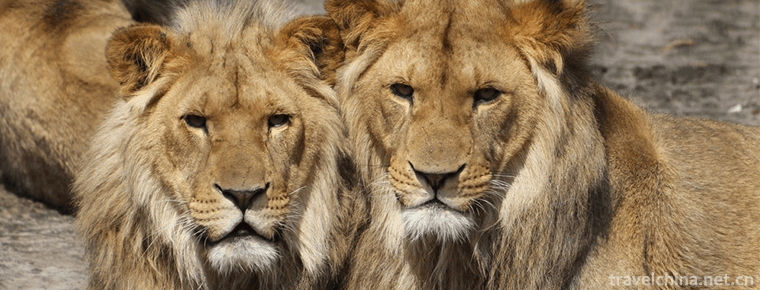
-
Dajueshan Scenic AreaZixi County Fuzhou City
Dajueshan is located in Zixi County, Fuzhou City, Jiangxi Province. Dajueshan is rich in wildlife resources and widely distributed. It is praised by experts as "Natural Oxygen Bar, a rare gene ba.
Views: 251 Time 2018-12-08 -
Longkou Nanshan Scenic Area
Nanshan tourist scenic spot is located in the beautiful scenery of Lu Shan in Longkou City, Yantai City, Shandong province. The scenic spots of Nanshan Temple.
Views: 115 Time 2018-12-08 -
Wanxiang Karst Cave
Vientiane Cave, the national AAAA-level tourist attractions, provincial geological parks, provincial scenic spots and provincial cultural relics protection units.
Views: 124 Time 2018-12-17 -
China Ejiao Museum
China Ejiao Museum, built in 2002, is located at the foot of Mount Tai, east of Donga County on the Bank of the Yellow River. It is funded by Donga Jiao Group, the largest Ejiao production enterprise .
Views: 136 Time 2018-12-22 -
Baiyunshan National Forest Park Luoyang
Baiyunshan National Forest Park is located in the primitive forest area of Funiu Mountain in the southwest of Songxian County, Luoyang City, Henan Province, with a total area of 168 square kilometers.
Views: 190 Time 2019-02-06 -
Shimen Xianhu Scenic Area
Shimen Xianhu Scenic Area is the first national 3A-level tourist scenic spot in Rongan County, located in Liuzhou, Guangxi. It has high Gorges out of Pinghu Lake.
Views: 117 Time 2019-02-08 -
Four Scenic Car Race
Duyuan Sijing Car Race is a folk activity in Pingshun County, Shanxi Province. In May 2011, Pingshun County, Shanxi Province declared the "Four Scenic Car Race .
Views: 349 Time 2019-04-28 -
Turn over to the nine floor
The Ninth Floor, also known as the Ninth Floor, is a traditional folk activity popular in northeastern Fujian and southern Zhejiang. It is mostly used in rituals such .
Views: 303 Time 2019-04-29 -
Ziyang Folk Songs
Ziyang Folk Song is the general name of traditional folk songs spread in Ziyang County, Shaanxi Province, and it is the most representative of traditional folk songs in southern Shaanxi Province. It h.
Views: 347 Time 2019-08-16 -
Anhui Medical University
Medical University Of Anhui (Anhui Medical University), referred to as "an Medical University", located in the capital of Anhui. Hefei City Yes. Key universities in Anhui By Anhui Provincial.
Views: 102 Time 2019-10-10 -
Taoping Qiang Village
Taoping Qiang village is located in Taoping Township, beside Zagunao River in Lixian County. Qiang village is 40 km away from Lixian City, 16 km from Wenchuan city and 139 km from Chengdu. It is a national key cultural relics protection unit and an important scenic spot in Jiuhuang line tourism circle..
Views: 129 Time 2020-11-07 -
Revenue and expenditure of Mianyang
In 2019, Mianyang's general public budget revenue will reach 13.115 billion yuan, an increase of 5.3%; general public budget expenditure will reach 45.334 billion yuan, an increase of 11.1%. The balance of RMB deposits in financial institutions was.
Views: 177 Time 2020-12-14
